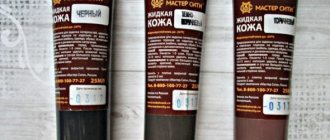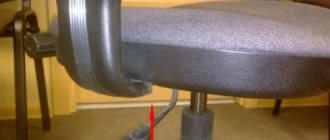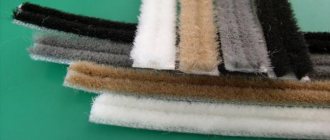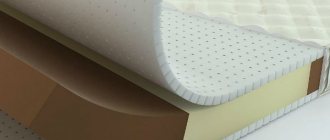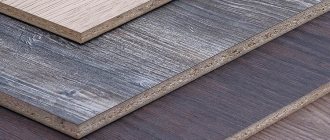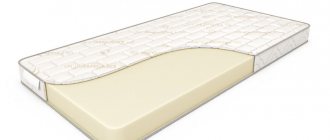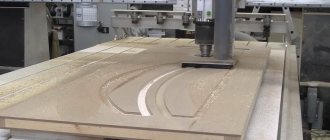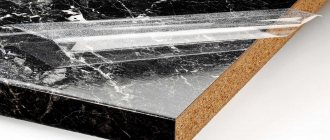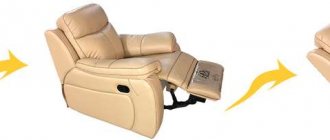How advisable is it to use liquid leather for repairing artificial leather products? Is it possible to achieve the same result as in cases with natural? To answer these questions, first of all, you need to understand what artificial leather is. Many people still associate artificial leather with dermatin (vinyl leather), the times of which are irrevocably fading. The scope of its application has decreased significantly in recent years, although it still remains quite wide.
Modern artificial leather is a completely different material. Not inferior in appearance to natural leather, this material even surpasses it in many respects. Sometimes the owner of branded sports shoes, bought for decent money, does not even suspect that they are made of high-quality leatherette. This is not a minus of this product at all, but rather its plus. Because high-tech artificial leather is stronger, more resilient and elastic, and more resistant to changes in temperature and humidity. And sometimes even more “breathable”. And always no less expensive than natural ones.
There are, of course, simpler types of modern artificial leather; they are mainly supplied to the market by our friends from the most populous large Asian country in the world. They are cheap and not as good as materials from European and American manufacturers, but they are far from leatherette!
However, we are not so much concerned with the consumer qualities of the material as with the possibility of using liquid leather to eliminate cuts, abrasions, burns, etc.
What is liquid skin
Liquid leather is a polymer mixture based on two elements:
- water;
- alcohol.
These are the main components, but in addition to them, rubber resin and a sticky adhesive base are also used. These components allow the prepared mixture, upon contact with a leather product or leatherette furniture, to adhere as tightly as possible and form a fairly elastic consistency.
After liquid leather for furniture has hardened, it is almost impossible to distinguish it from the material, since the mixture perfectly adapts to the characteristics of the leather, and taking into account the fact that the characteristics are as identical as possible not only from the visual side, but also in technical parameters, it can be called liquid skin is an ideal way to solve such issues.
The photo shows an example of how you can update leather furniture.
In addition to all the above components, dye is also used to make this adhesive mixture. It is necessary in order to create different shades and be able to repair all products. Thanks to this component, a full range of liquid leather mixtures are available on the market.
Almost every happy owner of a leather sofa has faced the need for periodic restoration.
And if the furniture has some unusual shade that is not on sale, then you can mix several options to obtain the desired effect. These products are used in many places, but its main direction is the restoration of leather goods. However, this material is also great for:
- dermantine;
- artificial leather;
- vinyl.
Not all damage to the skin can be repaired.
The specificity of liquid leather is such that only minor damage can be repaired.
Large abrasions cannot be hidden with such material.
How to choose
If there is a need to disguise small scratches or abrasions on furniture made from the above materials, then the choice of liquid leather should be approached only according to the color parameter. Since the quality characteristics, as well as the composition of the liquid, are almost identical for products of different brands.
Choose high-quality leather restoration products.
If you have a problem choosing a shade, and the desired option is not on sale, you can also get out of the situation in the following way. If, for example, the sofa is made in dark brown, and among the product range there are only brown and black options, then you can purchase two bottles and mix them to the desired shade. The mixture allows you to perform similar manipulations.
The cream will help you take care of your skin.
In addition, this will not qualitatively affect the quality of the product repair. Today, of all the brands that produce liquid leather for furniture repair, the most popular brands are the following:
- Liquid leather is a Russian manufacturer. The mixture dries completely and the furniture will be ready for use after 2-8 hours of rest. Drying time depends on the thickness of the applied layer. The color palette is not large enough.
- Saphir is a product from France. The product dries quite quickly. The product will be ready for use within 24 hours, but it can be done earlier, it all depends on the thickness of the applied layer. The price of products of this brand is somewhat high.
- Bradex - Israeli production. After application, the product will be ready in eight to twelve hours. In each case individually, depending on the amount of liquid applied. However, it is worth noting that the color palette leaves much to be desired.
Separate care is suitable for each skin type.
In any case, you can always familiarize yourself with the proposed color options and the cost of the product, and then choose the most suitable option for yourself.
What to remember when processing leatherette
When caring for artificial leather, there are some important rules to consider. Expensive professional products are not always suitable for all types of synthetic material. First you need to establish what type it is. The technique for caring for smooth leatherette, velor, suede or nubuck is different. Widely used means:
- Cream that matches the color and moisturizes the surface.
- Dye that eliminates scratches.
- Liquid emulsions.
- Shoe gloss creams.
- Deodorizing sprays.
- Brush.
Often using water-repellent creams is not recommended, as they cause cracks in shoes.
When processing leatherette, you should not make common mistakes:
- Washing products in a washing machine and dry cleaning.
- Using products that contain acetone.
- Hot air drying. Do not leave leatherette directly on batteries. The product must be dried at room temperature. Average drying time is 20 hours.
How to use liquid skin correctly
In order to eliminate scuffs on a leather product, you need to apply a liquid to the surface. This must be done carefully and slowly, making sure that the layer is even and not too thick. It is better to do this in several stages.
Gently apply liquid leather to furniture.
Initially, apply the first thin layer, wait for it to dry completely and then see if it is enough, or if you need to repeat the procedure. After the layer has been applied to the surface, you need to take a sponge and walk over the area and apply a little pressure. Such manipulations will help give the repaired area the relief that is inherent in natural fabric.
If you stain a leather sofa with something greasy, you can cover the stains with talcum powder for two hours.
In order to level the area, it is best to use a dry sponge. After this, you can let the product rest and at the same time dry the treated area. After complete drying occurs, it will be clear whether the procedure needs to be repeated or not.
Scuffs and small scratches on leather upholstery can simply be painted over.
If a sofa or other piece of furniture is damaged due to paresis, then liquid leather is applied as follows. Initially, the two edges of the cut are pulled together as tightly as possible and liquid is applied to the separation site. After it hardens, reapply the product and do the same procedures with the sponge as with normal rubbing.
Liquid skin is easier to apply with a sponge.
How to make a pattern if the surface was not perfectly smooth, but had a pattern
A napkin soaked in an adhesive solution is applied to the undamaged area of the surface, which, after drying, will preserve the shaped surface of the product. This stencil can be briefly applied to the surface of the wet putty to obtain an impression. The textured front side has now been restored using a template and a layer of coloring composition can now be applied.
Complete restoration of a handbag
Sofa repair
To the question: how to repair a leather sofa, the answer is quite simple. The procedure itself is quite simple, the main thing is to follow the instructions and recommendations for using the product. It is first necessary to clean the future repair site so that there are no excess fibers on it, which often remain after mechanical damage.
Use additional tools to restore furniture.
So that the liquid skin can grasp and fix the cut site as much as possible, it can be carefully washed in several places. This procedure allows you to make a smaller cut, more accurately divide it into smaller parts, and the product will be able to maximize its qualities. After this, you can safely carry out the degreasing procedure using detergent.
Colored leather is more difficult to restore.
After which you can choose the appropriate shade; if the desired shade is not in stock, you can mix several options using a table with colors. Then you can apply the prepared mixture. This is done using a small piece of foam rubber or a painting brush. The layer may be applied unevenly, and this is quite natural.
Scratches on a leather sofa can be partially eliminated or made as invisible as possible using special products.
But unevenness needs to be removed using a piece of plastic, a small spatula or a ruler. Then leave the area to dry completely, ensuring that it does not come into contact with anything.
Note! In order for the treated area to have the same relief texture as the entire sofa, it is necessary to apply a piece of the same material to the place of work for a few seconds, then remove it.
Most often you will get a good result.
Sometimes the result may not live up to expectations, and it seems that the entire restoration procedure using liquid skin was in vain, and the material does not meet the declared qualities. But most often the reasons may be:
- The cut is too large to be repaired or masked with a similar product, and another method of restoration must be used.
- Incorrectly selected shade, after which the treatment area is visible to the naked eye.
- Failure to comply with the rules of use, failure to follow the sequence of repair operations.
- Incorrectly selected piece of leather for applying a visual pattern.
Take good care of your furniture!
Therefore, it is so important to follow all recommendations from the product manufacturer in order to restore artificial leather on the sofa.
How to use liquid skin
Dried paint does not cause any harm to humans, but some precautions exist:
- It is preferable to work with medical gloves;
- protect your eyes from contact with the product;
- do not allow the undried product to touch any skin;
- the product is poisonous and dangerous;
- keep jars with the composition in a place inaccessible to children and animals;
- if the product gets on the body, rinse the affected area thoroughly under running water;
- should be used with caution for artificial fabrics imitating leather.
This might interest you. Is it possible to independently calculate the consumption of fabrics for sewing bed linen?
There is no need for special skills or experience to paint damaged areas of the product. The degreased surface is simply painted and dried well.
If it is not possible to select a material to seal a cut or scratch, then use an inconspicuous part of the product. Apply a few drops of acetone to the lapel of a jacket or boot to dissolve the leather. Quickly scrape off the material and apply it in the required place, rubbing it in with a spatula. The dried surface is polished with a soft cloth, then the desired color is applied.
Note! The painted surface acquires the qualities of a leather product after complete drying. The manufacturer indicates in the instructions how to use liquid leather correctly.
Repair using adhesive
Repair of other furniture elements
Liquid leather can be used not only for repairing sofas or armchairs. You can use it to update:
- seat upholstery;
- shoes;
- bags;
- outerwear.
Any leather product can be updated.
The repair procedure is no different from that described using the example of a sofa. The most important thing in this matter is to choose the right shade and allow the product to dry completely after processing. If the item is used before drying, then the entire repair process has gone down the drain.
Repairing leather from a burnt cigarette
The simplest way to restore a surface damaged by a cigarette butt is to clean the face layer to eliminate unevenness. The putty is applied several times, allowing each layer to dry. Apply the final layer and remove excess composition with a soft material. The recipe for restoring the original appearance of a product is quite simple and accessible.
You might be interested in this Features of Kviv Avto eco-leather for car interiors
Minor jacket repairs
The old method, used by people for many decades, does not lose relevance to this day. Knocked shoe socks or scratches on the sofa, a worn-out jacket or a favorite handbag that has lost its appearance can be repaired and updated with your own hands.
https://www.youtube.com/watch?v=2h4nMrvDAo8
Drying liquid skin
In order for the liquid skin at the repair site to dry, you do not need to use any additional means or special heating elements. After treatment, it’s enough just to leave it for a certain time until it hardens completely.
Read the instructions before using liquid leather.
Drying times depend on the brand of liquid leather used, as well as on the thickness of the applied layer. Some manufacturers offer options that dry within 24 hours. Other brands have a longer drying time.
How to fix significant damage
If a person is faced with a sufficiently large or deep cut, then applying liquid skin alone will not be enough. On her own, she will not be able to hide a large cut and disguise it. In this case, additional materials are used, namely adhesive fabric.
With the help of modern technologies, you can carry out minor repairs to leather products right at home.
The product is first prepared for repair, and if the rupture or cut is located in a difficult-to-reach place, it may be necessary to disassemble the product to ensure comfort and the ability to carry out a high-quality procedure. After which that part undergoes processing and degreasing. An adhesive cloth is then applied to the inside of the cut. So that she can secure and fix the cut as much as possible, you need to go over it with a hot iron.
After this, the liquid is evenly distributed on the outer part; for maximum naturalness, you can press a piece of the same leather. This procedure will help provide the area where the liquid skin is applied with exactly the same texture as the entire object.
Liquid leather is a paint that seamlessly seals holes in the leather.
After the mixture has completely dried, control and inspection are carried out. If one layer is not enough, then you can repeat the procedure several times for complete masking.
Important! If there is no identical piece of leather, you can use a napkin. In this case, liquid leather is applied not to the product, but to a napkin, after which it is pressed into the desired place for a few seconds and then removed, and the product is left to dry.
Features of application
Reconstructing leather goods is not a very complicated process, but it requires a lot of concentration and precision.
Step-by-step instruction:
- Clean the area to be treated from fibers and bring the edges of the tear as close as possible.
- Hem the crack pointwise in several places.
- If the gap is large, then glue the hole from the inside by placing a piece of material.
- Degrease the surface with alcohol or dishwashing detergent.
- Dry the product.
- Choose the color of Liquid Leather or make it yourself by mixing several paints from the set to achieve maximum compatibility. There are special color tables that can be used to determine the color scheme to obtain the desired shade.
- Apply the mixture to a previously prepared and dried area of the product with a thick paint brush or a piece of foam rubber (if possible, it is better to use foam rubber).
- Try to even out the layer of product as much as possible with a spatula, plastic credit card or ruler. But don't make the layer very thin.
- Until the mixture dries completely, prevent any objects or living organisms from coming into contact with this area. The time for complete drying depends on the thickness of the layer. Approximately two to eight hours.
- To make the surface the same texture as leather, you need to apply a piece of leather that is as similar as possible to the surface of the entire product. A porous pattern with the appropriate texture will be obtained if you press a piece of material for just a few seconds.
- If there is no fragment, then you can create a sample with your own hands. For example, using a regular paper napkin. How to do it? It’s very simple: apply a layer of the mixture to its surface and apply it to an undamaged area of the product to remove the relief imprint, then dry the template thus obtained and use it in the same way as an identical piece of product material.
There are also features of the application and subtleties of using two primary colors. These include:
Liquid Leather in black is the least noticeable when processing the material. Therefore, the darker the product, the easier it is to restore it using such a mixture. Any dark things will be easy to process and reconstruct. White Liquid Leather may vary greatly from the shade of the product. Therefore, yellow or black paint is most often mixed into it to obtain the required shade.
You just need to do this especially carefully
Advantages and disadvantages of the product
The mixture, after its release on the market, quickly gained popularity and great demand. This is explained by a large number of advantages that are characteristic of it.
Any remedy has pros and cons.
Among the main advantages are the following:
- easy to apply to damaged areas;
- dries quickly;
- polymerization occurs after 20 minutes, which allows you to mix several colors to obtain the desired shade;
- durable and elastic;
- penetrates well into the surface, preventing subsequent delamination;
- not afraid of temperature changes;
- long service life;
- does not require additional thermal treatment methods;
- the composition does not contain substances that can adversely affect human health and the environment.
“Liquid skin” is very easily absorbed into the material.
Nothing is perfect, so even such a universal product as liquid skin has its drawbacks. These include the fact that only small areas can be treated and masked. No other disadvantages were found.
Storage of liquid skin
If liquid skin is stored correctly, then such a tube can be used repeatedly and for a very long time. Moreover, the mixture does not change its characteristics and features for the worse.
Manufacturers recommend storing the tube with the adhesive mixture in places that are difficult for children to reach, and should not expose it to direct sunlight. The ideal storage temperature is zero degrees Celsius.
The result of using liquid skin.
If you follow all the recommendations regarding the storage of liquid leather, then it is quite safe and relevant to use it for two years.
Liquid leather applied to the area required for restoration can retain its characteristics for 35 years. At the same time, it does not change its qualities when the air temperature fluctuates in the following range: from -35 to +70.
